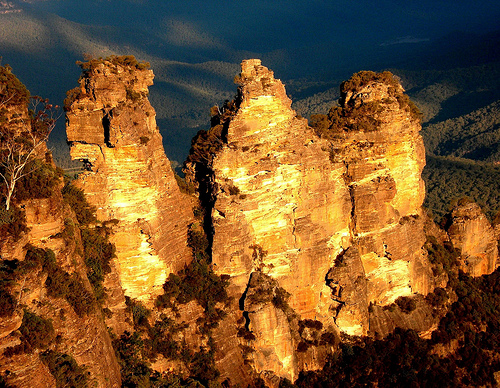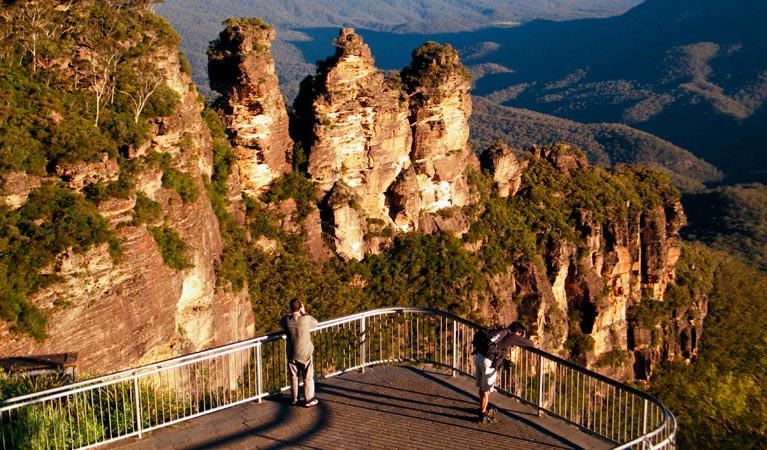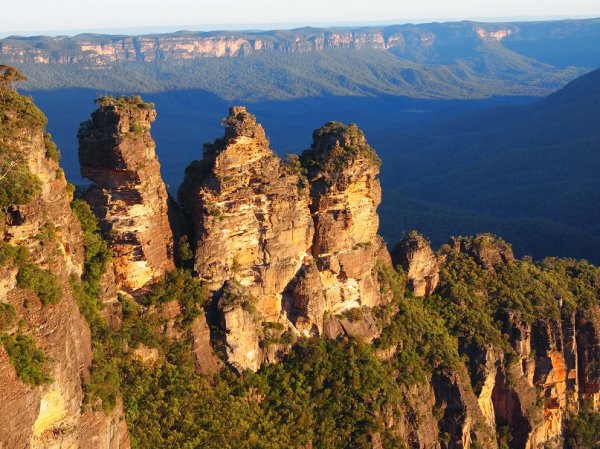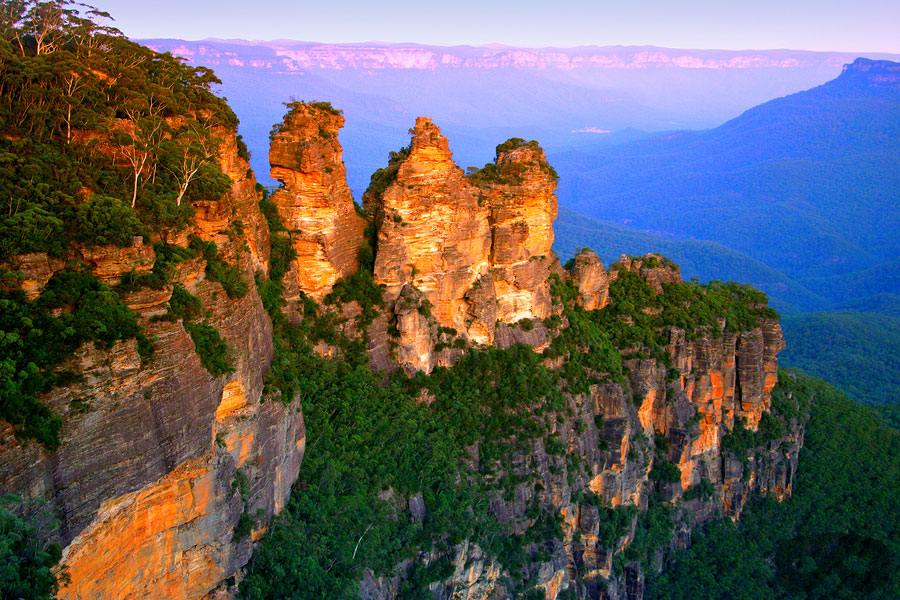The Three Sisters is a rock formation in the Blue Mountains of New South Wales, Australia, on the north escarpment of the Jamison Valley. They are close to the town of Katoomba and are one of the Blue Mountains' best known sites, towering above the Jamison Valley. Their names are Meehni (922 m), Wimlah (918 m), and Gunnedoo (906 m).
The Sisters were formed by land erosion. The soft sandstone of the Blue Mountains is easily eroded over time by wind, rain and rivers, causing the cliffs surrounding the Jamison Valley to be slowly broken up.
The commonly told legend of the Three Sisters is that three sisters (Meehni', 'Wimlah' and Gunnedoo') lived in the Jamison Valley as members of the Katoomba tribe. They fell in love with three men from a neighbouring tribe (the Nepean tribe), but marriage was forbidden by tribal law. The brothers were not happy to accept this law and so decided to use force to capture the three sisters. A major tribal battle ensued, and the sisters were turned to stone by an elder to protect them, but he was killed in the fighting and no one else could turn them back. This legend is claimed to be an Indigenous Australian Dreamtime legend.
However, Dr Martin Thomas, in his work "The artificial horizon: imagining the Blue Mountains", clearly shows that the "aboriginal" legend is a fabrication created by a non-Aboriginal Katoomba local, Mel Ward, presumably to add interest to a local landmark. The story originated in the late 1920s or early 1930s and is unknown prior to that date.
The Aboriginal traditional owners, the Gundungurra, have a legend that includes the Sisters rock formation.
From nearby Echo Point, a bushwalking trail leads to the Three Sisters and down to the valley floor via more than 800 well-maintained steel and stone steps called "The Giant Stairway". Then a 1.5-hour walk on The Federal Pass trail leads to the base of Katoomba Falls and the Katoomba Scenic Railway. Walkers who don't wish to climb back to the top can take the Scenic Railway back to the plateau for a fee.













